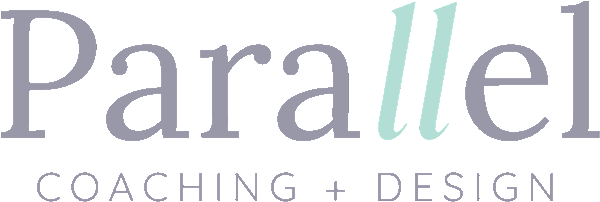The Case for Organizational Design
“Design…like, new chairs for the office?”
No one ever knows what I mean outright when I talk about organizational design. Sure, when we think of the term “design”, we often think of fashion design, graphic design, interior design, etc…but what about organizational design?
Organizational design is a strategic approach to ensuring that businesses have what they need to be effective and successful. The word “design” on its own inspires thoughts around intention, purpose, and craft. In theory, the concept of design fits perfectly into the framework of business development, yet it has yet to permeate our modern vernacular beyond traditional design-centric industries. Isn’t the point of doing business, or running any type of organization, to intentionally craft plans and strategies that would lead to successful outputs and outcomes? The concept of design may feel niche and out of place to many professionals, but why shouldn’t leaders across industries take a design approach to developing their businesses and organizations?
Baked into organizational design is the concept of design thinking: a human-centered process for creative problem solving. According to IDEO, design thinking is a process containing 5 core elements: empathy, definition, ideation, prototyping, and testing. Design thinking is a very human-centered method for navigating problem solving and decision making because it’s an intuitive way to approach problem solving and decision making as a human thinker.
People need to feel heard and understood in order to position themselves within a problem solving effort (empathy). People need a clear understanding of the context and landscape they are operating in so that they can know where they are now, how they got there, and where they want to go (definition). People need space to innovate and brainstorm the strategies that are going to move them forward from awareness to action (ideation). People need a process for planning and creating a roadmap to take action on strategy (prototyping). And people need an environment to carry out and evaluate their actions (testing). Without a succinct process for understanding, defining, and taking action on the problems inherent in our work, teams often struggle to find timely, effective solutions that drive consistent quality and meaningful forward development.
Organizations as Ecosystems
Organizational design is a tool for managing your business and teams by taking into consideration the needs of your operations as well as the people who make up your workforce. You see, it’s that workforce piece that often gets overlooked when we talk about business development and quality improvement. I’m not sure where folks got the idea that their operations can function on their own without the assistance of a human workforce, but the reality is that every aspect of your business is facilitated by human workers. Every single aspect.
This might sound like a platitude, but organizations are truly nothing without the people behind the work. Literally, the plans that exist on paper and in theory cannot come to life without people to carry out the tasks needed to make progress towards critical goals. Instead of looking at our organizations as static entities composed of wheels and cogs, we need to see them as fluid ecosystems of humans with diverse human needs, experiences, perspectives, strengths, etc. Seeing our organizations as ecosystems places humans at the center of our operations. It forces us to consider that our theoretical plans and strategies are only as effective as the workforce behind them.
We know that psychological safety and an empowering professional environment are game changers when it comes to employee performance (1, 2, 3), however those needs don’t register when we focus solely on the technical aspects of our systems. When we take the time to consider that our workforce is not in fact comprised of mindless drones, we can create systems that are supportive of how humans think and process information.
When leaders don’t consider what the humans behind the work need in order to operate successfully, businesses run the risk of incurring an unsustainable workforce. That is, a workforce with a limited capacity to perform at a level that drives desired outcomes. That might look like rampant staff burnout, low quality performance, high turnover, or a combination of these not-so-great outcomes. Sure, issues related to burnout, performance, and retention are innate to any human workforce: people get tired, performance levels waver from time to time, people seek out new job opportunities. Where a workforce becomes unsustainable is when these outcomes are characterized as normal elements of your culture and calcify insidious barriers to business growth and development.
Organizational design is more than just understanding what it takes for your business to operate effectively on a technical level. It’s also about having an understanding of the underlying culture and processes elements that enable people to perform at their best and succeed in their role.
How can we ensure that those elements exist within our system? How can we design organizations to incorporate the critical elements that support optimal operational and workforce function. We don’t think of something as incredibly unsexy as organizational design when we are working to grow and sustain our businesses, but perhaps we should.
Want to learn more about embedding organizational design practices into your business? Let’s connect!

